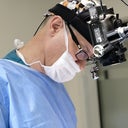Posted underRhinoplasty q&a
I'm planning to get an open rhinoplasty with dorsal augmentation and tip cartilage. Am I at risk for necrosis?
Hello, I am planning on getting my first ever rhinoplasty. It will be an open approach and will include dorsal augmentation and additional tip cartilage. Am I at risk for necrosis? Do cartilage grafts increase the risk? Or is it just injections and fat? Also, do splints cause pressure necrosis? Thanks
Answers (7)
From board-certified doctors and trusted medical professionals
Dr. Oakley Smith, MD, FRCSC

Dr. Oakley Smith, MD, FRCSC
Certified Facial Plastic Surgeon
Answer
Dr. Randal Haworth, MD, FACS

Dr. Randal Haworth, MD, FACS
Board Certified Plastic Surgeon
Answer
Dr. Eric M. Joseph, MD

Dr. Eric M. Joseph, MD
Board Certified Facial Plastic Surgeon
Answer
Dr. William Portuese, MD
Dr. William Portuese, MD
Board Certified Facial Plastic Surgeon
Answer
More Rhinoplasty Questions
See all Rhinoplasty Q&AWE SEND PRETTY
EMAILS
What’s trending? Who’s turning heads? Which TikTok myths need busting? We’ve got you. No fluff, no gatekeeping—just real talk. Get our free, unfiltered newsletter.

